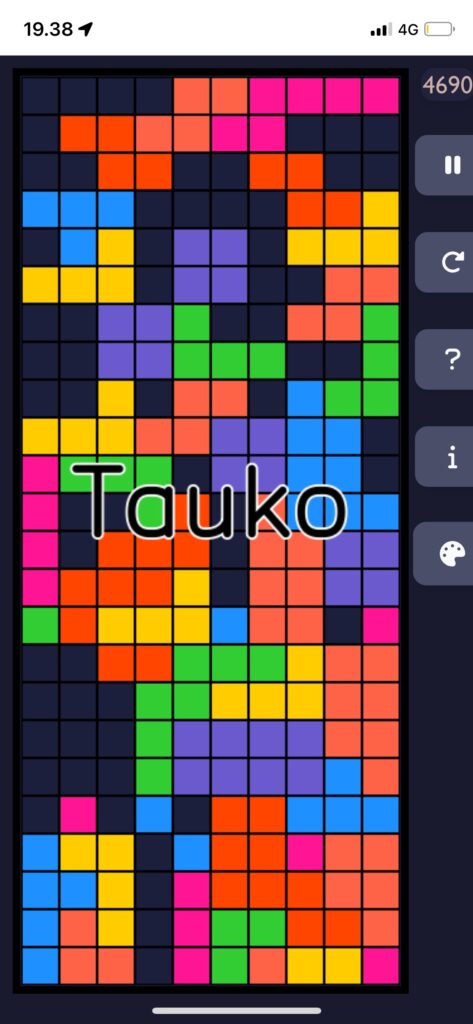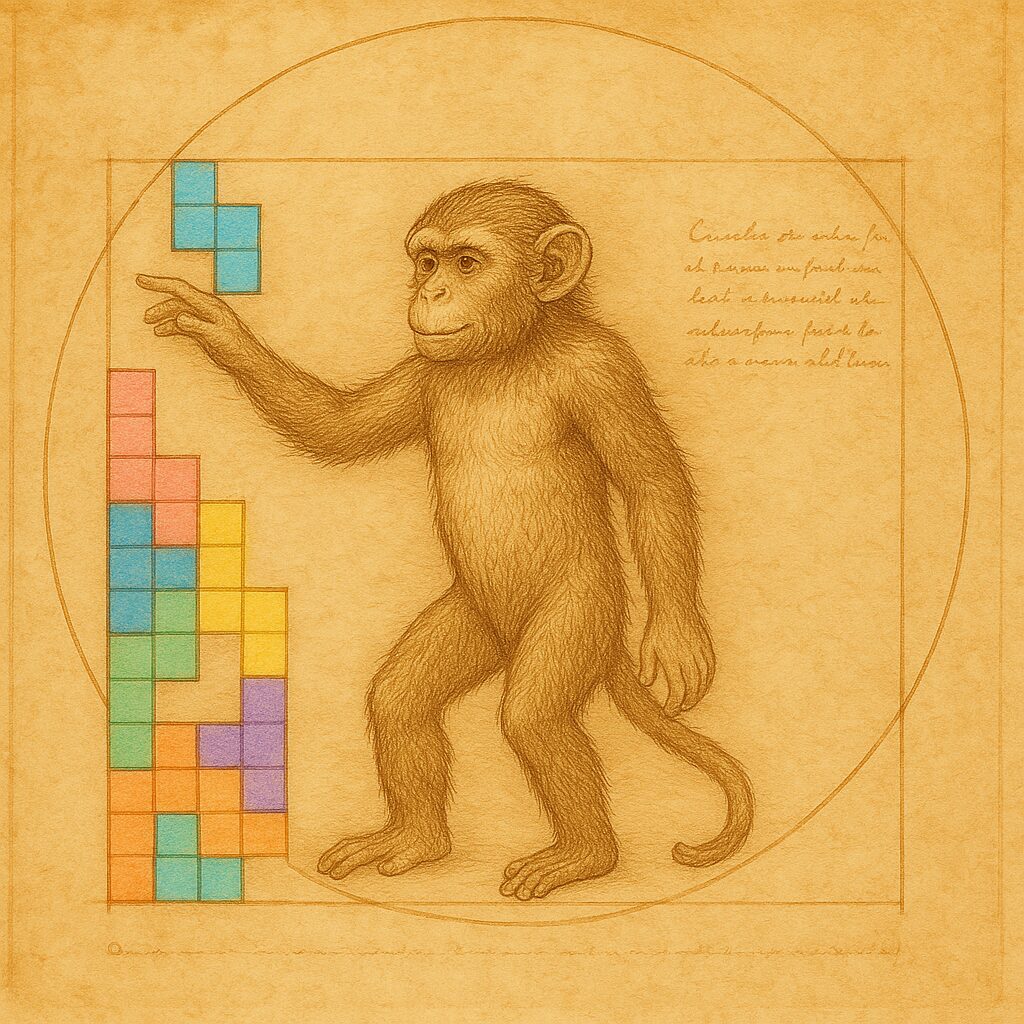- responsive; touch, keyboard and mouse controls,
- labels in Finnish only for now
The primary goal of tTrsTherapy is to remove distractions and create an experience that allows players to engage with the game in a mindful way.
So we are aiming for less of a gamified experience and more for a zen of doing the thing for its own sake.
Traditional Tetris mechanics have been retained, but elements that add cognitive overload—such as increasing speed over time—have been removed. This ensures that players can maintain a steady rhythm and focus on the game without an artificial sense of pressure.
Aesthetic and UX Considerations


As a default, tTrsTherapy adopts a pastel-based color scheme designed to be easy on the eyes. (It also has a dark mode with a brighter color scheme.) The UI is intentionally simple, with a clean, uncluttered layout. Every element was designed with subtlety in mind, helping to foster a calming environment.
Large touch areas make the game mobile-friendly, while a desktop experience retains traditional keyboard controls. The onboarding sequence adapts based on whether the user is playing with a keyboard or a touchscreen, ensuring a seamless introduction to the game. Simplified mode of function was enabled largely by tetris.js which is the underlying “engine” I embedded.
Tetris and Cognitive Science
The idea of using Tetris as a cognitive tool is not new. Multiple studies have investigated its effects on memory consolidation, stress reduction, and even post-traumatic stress disorder (PTSD) prevention. A notable study by Holmes et al. (2009) found that playing Tetris shortly after a traumatic event could reduce the occurrence of intrusive memories by interfering with memory consolidation pathways. This research suggests that visually engaging, repetitive tasks can help redirect the brain’s focus away from distressing memories.
Further studies, such as those by James et al. (2015), have expanded on this concept, highlighting how visuospatial tasks like Tetris can function as cognitive interventions for anxiety and trauma. While Tetris Therapy is not a medical treatment, it is designed with these insights in mind, offering a structured yet calming play experience that aligns with the cognitive principles identified in this research.
By stripping away unnecessary distractions and focusing on core mechanics with a therapeutic framing, Tetris Therapy seeks to provide a minimalist yet effective cognitive tool for relaxation, focus, and psychological resilience.
Caveats:
- On desktop, the game would be more appealing if the whole UI was centered on screen. Unfortunately the underlying tetris.js does not allow this.
- Adding an onboarding experience to explain the rationale and usage in the app may help users figure out what & especially why more smoothly

